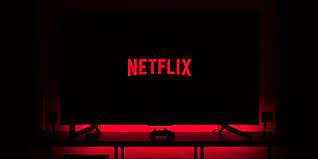Netflix, an American-owned streaming platform, is considering implementing yet another price hike for its streaming service in the near future. It has been rumoured that the streaming service will implement the price increase a “few months” after the strike by Hollywood actors has ended, which may take place within the next few weeks.
The Wall Street Journal has stated that Netflix will increase its fees in “several markets globally,” beginning with the United States of America and Canada. The amount by which Netflix will increase its fees is still unclear, and the streaming service has declined to comment on the matter.
Last year, Netflix increased costs for all of its plans, including the ad-free Standard tier, which is now priced at $15.49 per month, and the Premium plan, which is now priced at $19.99 per month. Additionally, the company introduced a plan that included advertisements and cost $6.99 per month. Subsequently, it discontinued its mid-tier ad-free basic plan that cost $9.99 per month.
This year, Netflix began cracking down on the practice of sharing passwords and began adding an additional monthly fee of $7.99 for those who shared their accounts with others who did not live in their households. The decision to increase rates once more comes at a time when Hollywood is getting closer and closer to getting back to work.
Read also: Netflix records subscriber increase after crackdown on password-sharing
Netflix’s contract with WGA
A little over a week ago, the Writers Guild of America (WGA) put an end to its strike and began voting on a contract with major Hollywood companies, including Netflix, that has the potential to make a significant impact on the streaming market.
Under the terms of the new agreement, streaming providers such as Netflix, Disney Plus, Hulu, and others will be required to provide streaming data to the WGA. This will enable writers to evaluate the success of the work they have created. A minimum pay increase of 18% for high-budget films is made available to authors of streaming features under the terms of the contract, in addition to a 26% rise in residuals.
The Writers Guild of America (WGA) has estimated that the fees associated with their new deal will equal to less than 0.2% of Netflix’s total annual earnings.
When Netflix intends to increase prices
While all is going on, the actors in Hollywood are continuing their strike, which means that many productions are still on hold. It is likely that Netflix will wait until the strike is over before increasing pricing, as doing so when there is no new material being produced does not seem like the most prudent course of action. After the writers’ strike and the actors’ strike have ended, there will probably be a large number of new television shows and films released, which Netflix can use to justify the price rise.
The Wall Street Journal (WSJ) says that in addition to the news regarding Netflix, Disney Plus may create a new live sports tier in countries other than the United States. Even Disney Plus has been subjected to price increases in the past, and the most recent one is scheduled to take effect later this month.
Impact on users
Consumers are left to cope with the financial ramifications of their entertainment choices as streaming giants such as Netflix, Disney+, and Warner Bros. Discovery continue to modify the cost of their subscription packages.
The equilibrium between practicality and affordability is put to the test with each new price hike. When additional forms of entertainment costs, such as going to the movies, paying for a membership to a video gaming service, or attending live events, are taken into consideration, the overall cost of entertainment for an individual or a family can quickly skyrocket.
Challenges are faced by more parties than just customers alone. The producers of content and production businesses are likewise caught in a precarious balancing act as they attempt to negotiate adequate recompense for their work while preventing the cost of their content from being unaffordable to viewers. Streaming services must continue to give value despite increases in subscription prices by producing their own original programming and amassing extensive libraries of previously published content.
As a result of this predicament, customers are becoming more price-conscious and pickier in their purchasing decisions. In the ever-evolving world of digital entertainment, it is the customers who will ultimately decide which streaming platforms are worth the investment and which ones are left behind.




